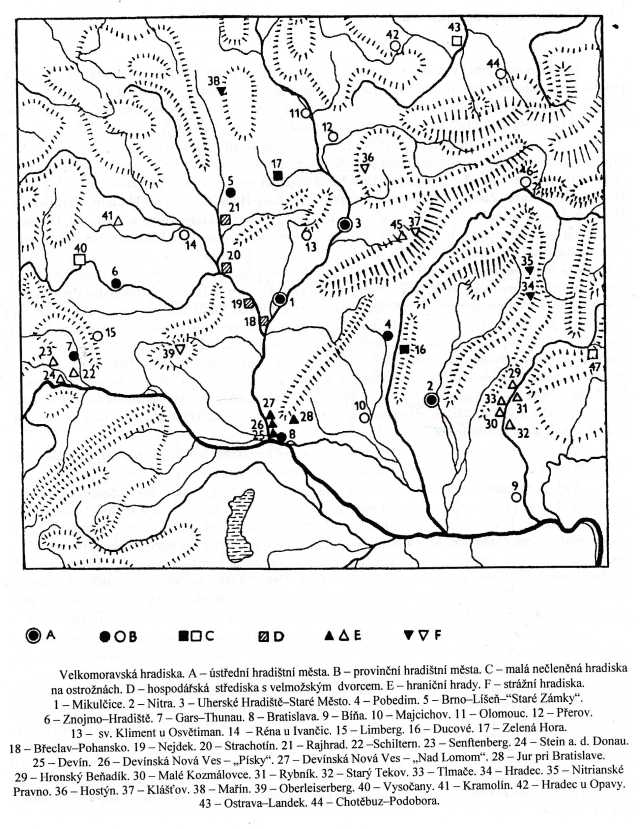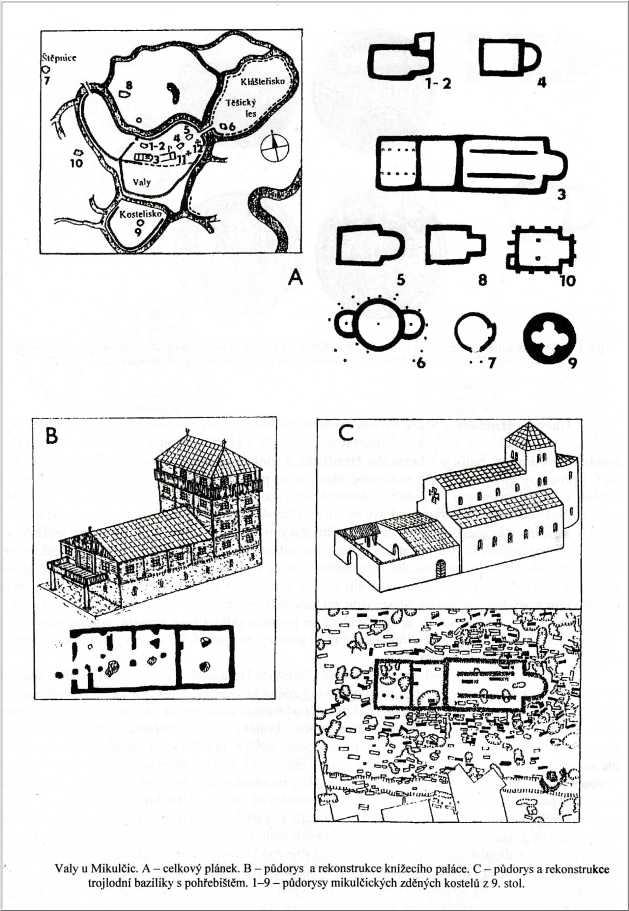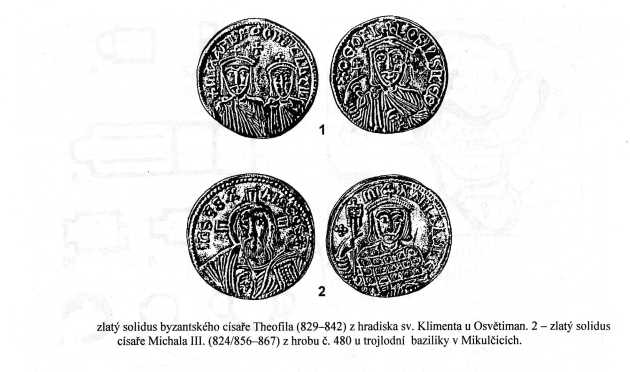to je hustí
SEATS OF THE GREAT MORAVIAN PRINCES I.
Categories: Castles, strongholds and extinct places
Archaeological excavations of Great Moravian hillforts and burial sites after the Second World War confirmed the existence of a permanentMojmírovci in the area north of the middle Danube and the discovery of an advanced material culture of the Great Moravians. The archaeological sources for the history of the Great Moravian Empire consist of hillforts, rural settlements andsettlements, burial sites, sacral buildings, mass finds and very numerous furnishings.Forts formed the backbone of the power structure of Great Moravia. Only in its original Moravian-West Slavic core are there over 40 known hillforts today.
In addition to the three central political centres(Mikulčice, Uherské Hradiště - Old Town, Nitra), there are "provincial castle towns"(e.g. Brno - Líšeň - Staré Zámky, Olomouc, Přerov, Znojmo - Hradiště, Gars - Thunau, Bratislava - Hrad, Pobedim, Bíňa, etc.), small "castles" on steep islets(Zelená Hora near Vyškov, Ducové), extensive lowlandlarge fortified settlements - economic centres with a great manor(Břeclav - Pohansko, Strachotín, Rajhrad, etc.), smaller hill forts grouped in three concentrations on the southern and eastern border line(Schiltern, Děvín, Hronský Beňadík, etc.), smaller hill forts in the southern and eastern border line(Schiltern, Děvín, Hronský Beňadík, etc.), and the castles of the HronskýBeňadík region.) and terrain sporadically inhabited dominants - "guarding forts"(Oberleiserberg, Vysočany, Hostýn, Klášt'ov, Nitrianské Pravno, etc.).
The above classification shows that the hillforts had different functions. According to one Bavarian record "Marharii halant XI civitates", i.e. 11 hill-fort towns or administrative districts. This statement, however, can hardly be confronted with the archaeologically documented situation. The strongholds of greatest political and economic importance were located in the lowlands: watercourses, river arms, and marshes provided them with natural protection in addition to their own buildings. In addition to the princely palaces, the courts of the great with churches, tombs and cemeteries, the buildings of this type or their 'sub-castles' contained a network ofsettlements, craftsmen's colonies, marketplaces, or other satellite fortified settlements with churches. On the other hand, highland fortifications had more military functions.The most important centres, certainly the residences of the Mojmir princes, were located near today's Mikulčice in the Hodonín region and in the Hungarian-Hradiště-Old Town agglomeration:
VALY U MIKULČIC
A typical lowland hillfort protected by blind arms of the Morava River. The Great Moravian town was built here by rebuilding an old fortress from the last third of the 7th and 8th centuries. Its central part consists of a princely castle with an area of about 8 hectares. Around it were grouped a number of other fortified and unfortified formations (Štěpnice, Kostelisko, Těšické, Pinuška, etc.) with a total area of over 200 ha. The acropolis was fortified by a wall with a typical wooden chamber construction with a front stone wall. A wooden bridge over the river arm led to the main gate. Inside the princely residence were several brick churches, notably a three-nave basilica with a baptistery, a smaller "proprietary" churches and mausoleums with brick tombs, a brick princely palace and other buildings with stone and wooden buildings.

The three-aisled basilica with the surrounding burial ground and baptistery represents the largest known Great Moravian sacred building (l 35 m, w 9 m). The five tombs in the nave, unfortunately robbed and devastated, were certainly used to bury members of the highest Great Moravian spiritual or secular nobility. It has also been suggested that Archbishop Methodius was buried in tomb No. XVI (tomb No. 580) in the main nave of the basilica, which was open and devastated before the research. Finds of coloured plaster with figural decoration and fragments of stained glass windows, remains of richThe rich original inventory of graves, as well as the finds of metal fonts (stilts) show that this was probably an episcopal church. Also in the burial ground around the basilica, members of the upper social classes were buried. From the grave of the Grand Master, situated near the southern foundation wall of the basilica (grave no. 480), comes a rare find of the "Charon coin" - a golden solidus of the Byzantine emperor Michael III. It is undoubtedly related to the mission of the brothers of Thessaloniki.

Also around the other churches in the castle and in the suburbs were cemeteries with rich equipment (swords, spurs, gold jewellery, Christian symbols). In total, 12 basic churches (including 3 rotundas) have been uncovered in the Mikulčice agglomeration, indicating a strong concentration of spiritual forces. Outside the acropolis, craftsmen's (jewellery, metalwork, pottery, blacksmithing, etc.)) workshops, settlements of craftsmen, merchants, other cemeteries around churches, etc. The whole Mikulčice complex is a grouping of about 2000 people, 300 of them members of the upper classes in the castle itself. Mikulčice was probably also the main marketplace of the Moravians, a real crossroads of contemporary international trade.

Mikulčice fortress is considered to be the "ineffable and unlike any other ancient Rostislav fortress" and the "old Rostislav's town" of the Fulda chronicles. Many scholars consider it to be the capital of the empire - the legendary "Moravia", but this cannot be safely proven.
Podborský, V.: HISTORY OF THE EARLY AND EARLY HISTORICAL AGE
You can search for artefacts from this period using our metal detectors.
The article is included in categories:





